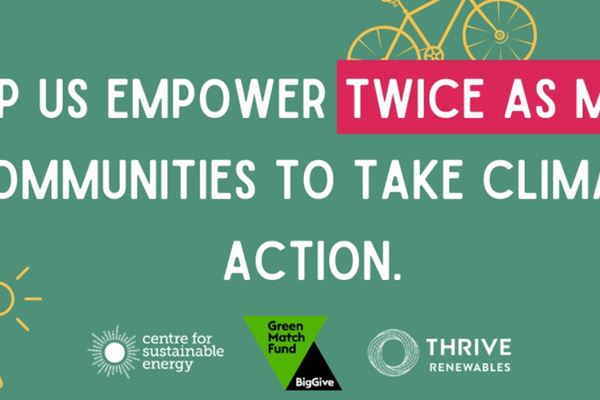2020 has been another strong year for generation. We are pleased to announce our wind and hydro projects have generated enough renewable electricity to power of all the homes in a city the size of Lincoln. That’s nearly 150,000MWh of clean, green electricity, preventing the emission of 66,689 tonnes of carbon dioxide.
The clean electricity we generated in 2020 is enough to power 40% of all the UK’s electric vehicle journeys. As the UK continues to decarbonise, the electrification of different sectors such as transport and heating will see electricity demand double by 2050. It is therefore more vital than ever to continue building renewable energy projects to power the UK’s clean energy transition.
“It’s great to see another strong year of generation from our wind and hydro projects, as well as the broader renewables sector. In 1994 when Thrive was founded only 2% of the UK’s electricity came from renewable sources, and now that figure is a very significant 42%. We’re proud of what has been achieved so far but there’s plenty more work to be done, and not time to waste if we’re going to reach net zero by 2050. Last year we invested in five new clean energy projects, including geothermal, solar, hydro and battery storage. These projects diversify our portfolio and will play a key role in supporting the UK’s transition to clean energy system.” - Matthew Clayton, Managing Director, Thrive Renewables
Last year was a year of records for renewables, both locally and globally. They generated 42% of the UK’s electricity, overtaking fossil fuels for the very first time. Thanks to strong winds and some especially sunny months, paired with reduced demand and air pollution due to lockdown, we saw peak solar and wind generation in 2020. The International Energy Agency reported that nearly 90% of global new energy generation was renewable, a huge step towards achieving net zero around the world.
This trend is set to continue for renewable energy as we advance through 2021. The Renewable Energy Association suggests that with the right support, renewables could be providing the UK with 50% of its electricity needs by 2022. In addition, with the UN’s climate conference, COP26, just around the corner, public opinion and that of its leaders if focused on decisive action to combat the climate crisis and a kickstart a green economic recovery.
[1] Calculated using the most recent statistics from the Department of Business, Energy and Industrial Strategy (BEIS) showing that annual UK average domestic household consumption is 3.578MWh, https://www.renewableuk.com/page/UKWEDExplained, with an average of 2.3 people per household https://www.ons.gov.uk/peoplepopulationandcommunity/populationandmigration/populationestimates/bulletins/populationandhouseholdestimatesfortheunitedkingdom/2011-03-21
[2] RenewableUK uses BEIS’s “all fossil fuels” emissions statistic of 446 tonnes of carbon dioxide per GWh of electricity supplied in the Digest of UK Energy Statistics (July 2020) p125 Table 5E (“Estimated carbon dioxide emissions from electricity supplied 2017 to 2019”), https://www.renewableuk.com/page/UKWEDExplained. Average per capita greenhouse gas emissions.
[3] The average electricity consumption of an electric vehicle is 307Wh/mile (https://ev-database.uk/cheatsheet/energy-consumption-electric-car), the average annual car mileage is 7,400m (https://www.gov.uk/government/statistical-data-sets/nts09-vehicle-mileage-and-occupancy#car-mileage, UK electric car fleet as of Sept 2020 is 164,462 cars (https://www.gov.uk/government/statistical-data-sets/all-vehicles-veh01#licensed-vehicles), and the average annual mileage of 65,996 Electric Vehicles, (40% of the UK’s Electric Car Fleet)



